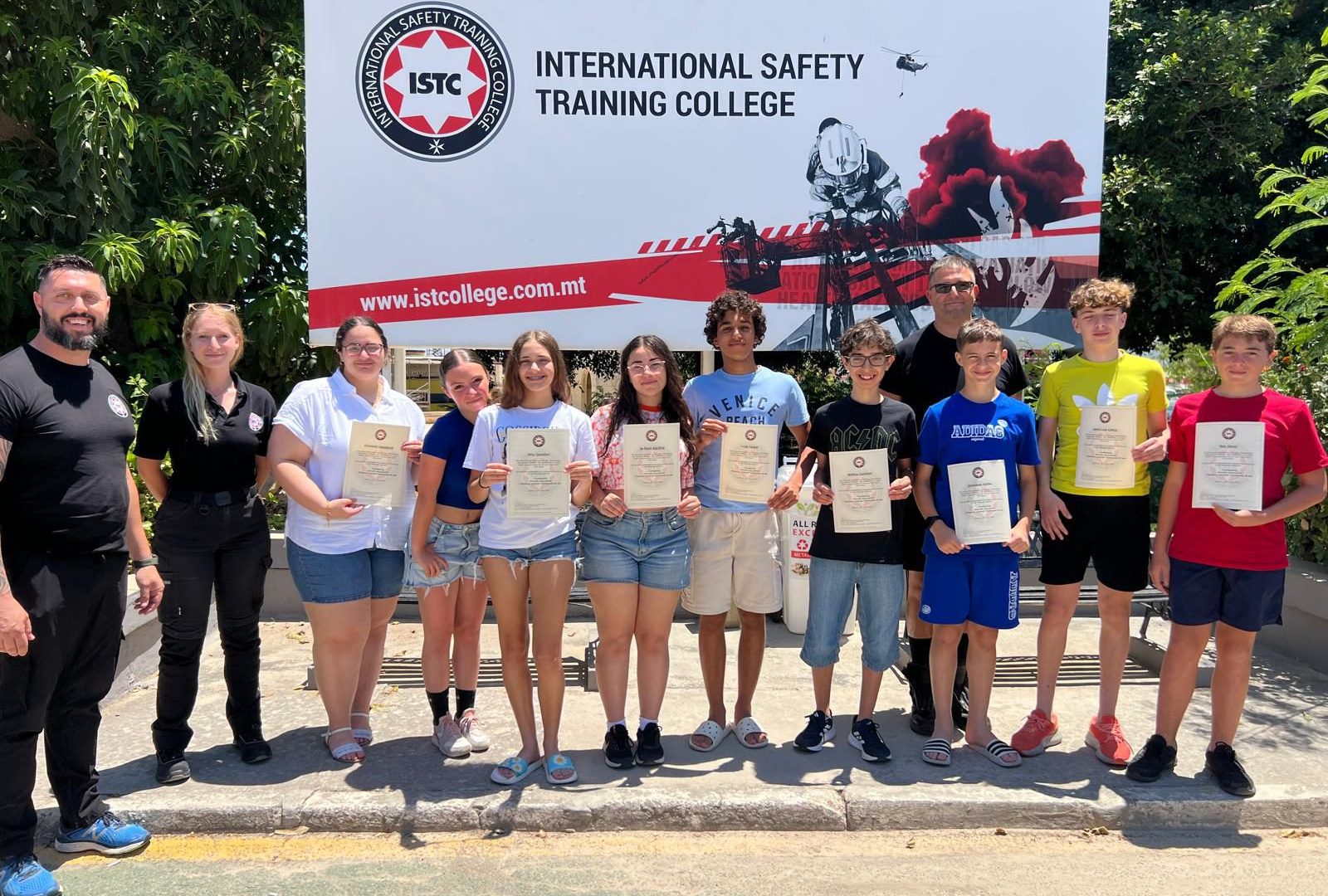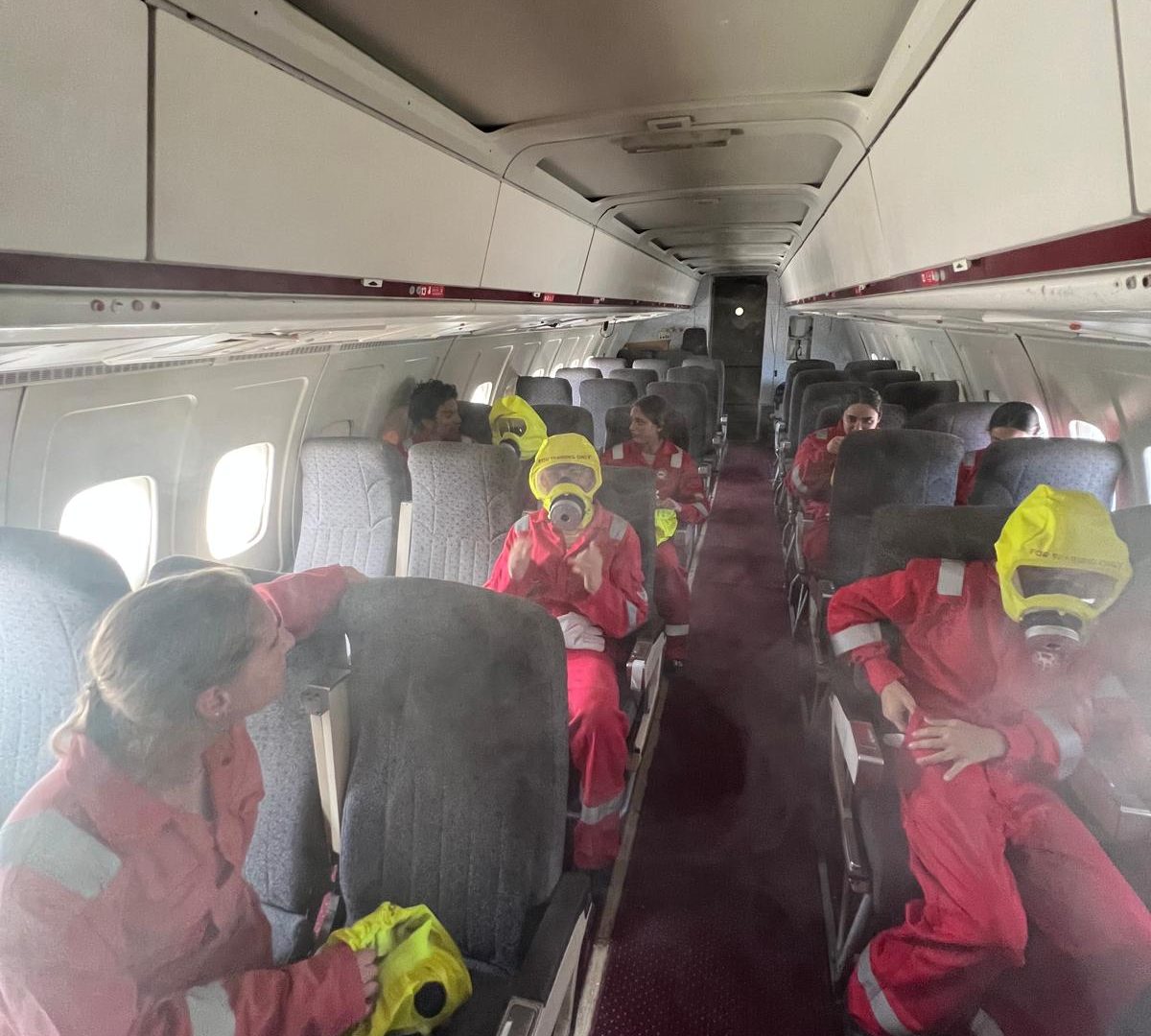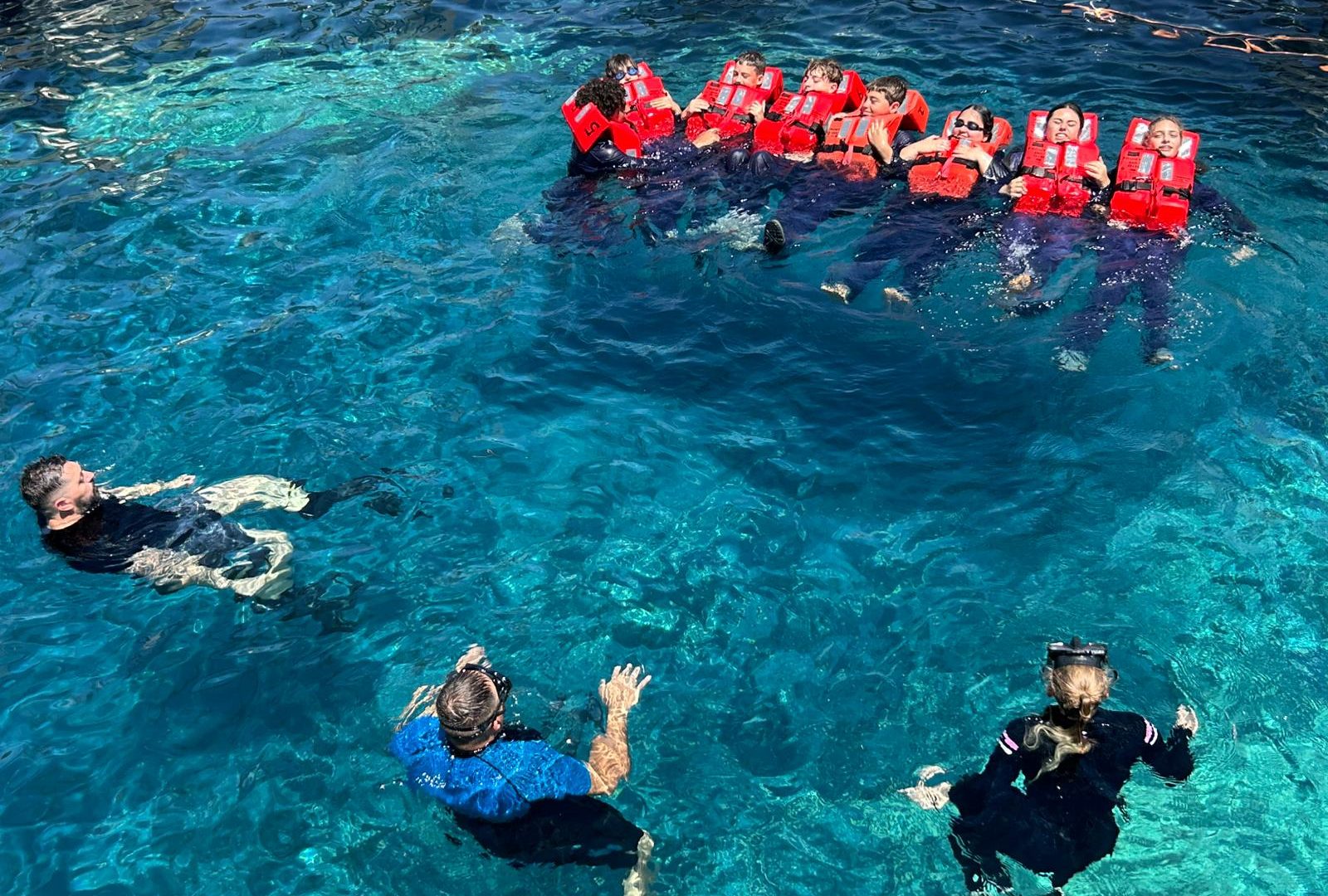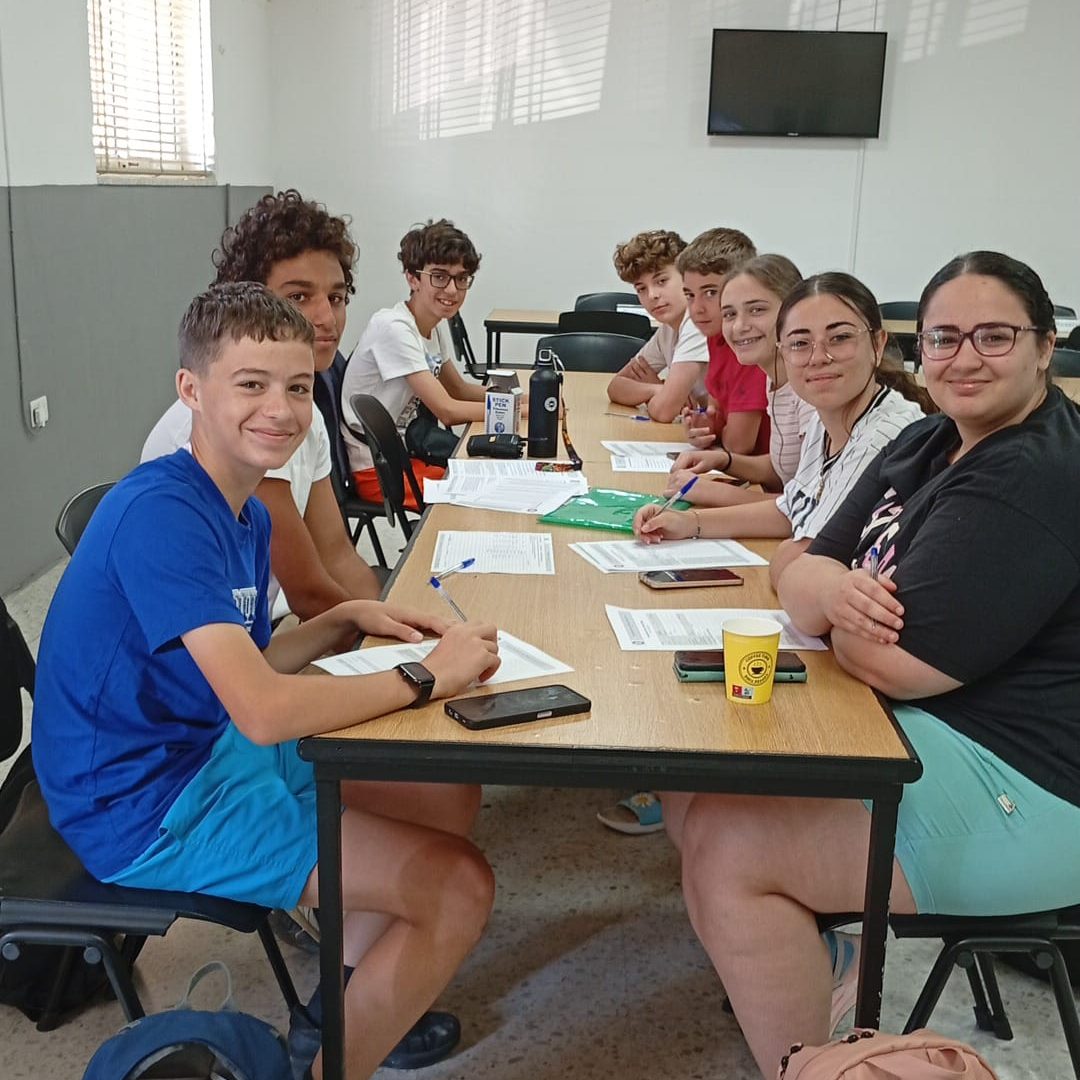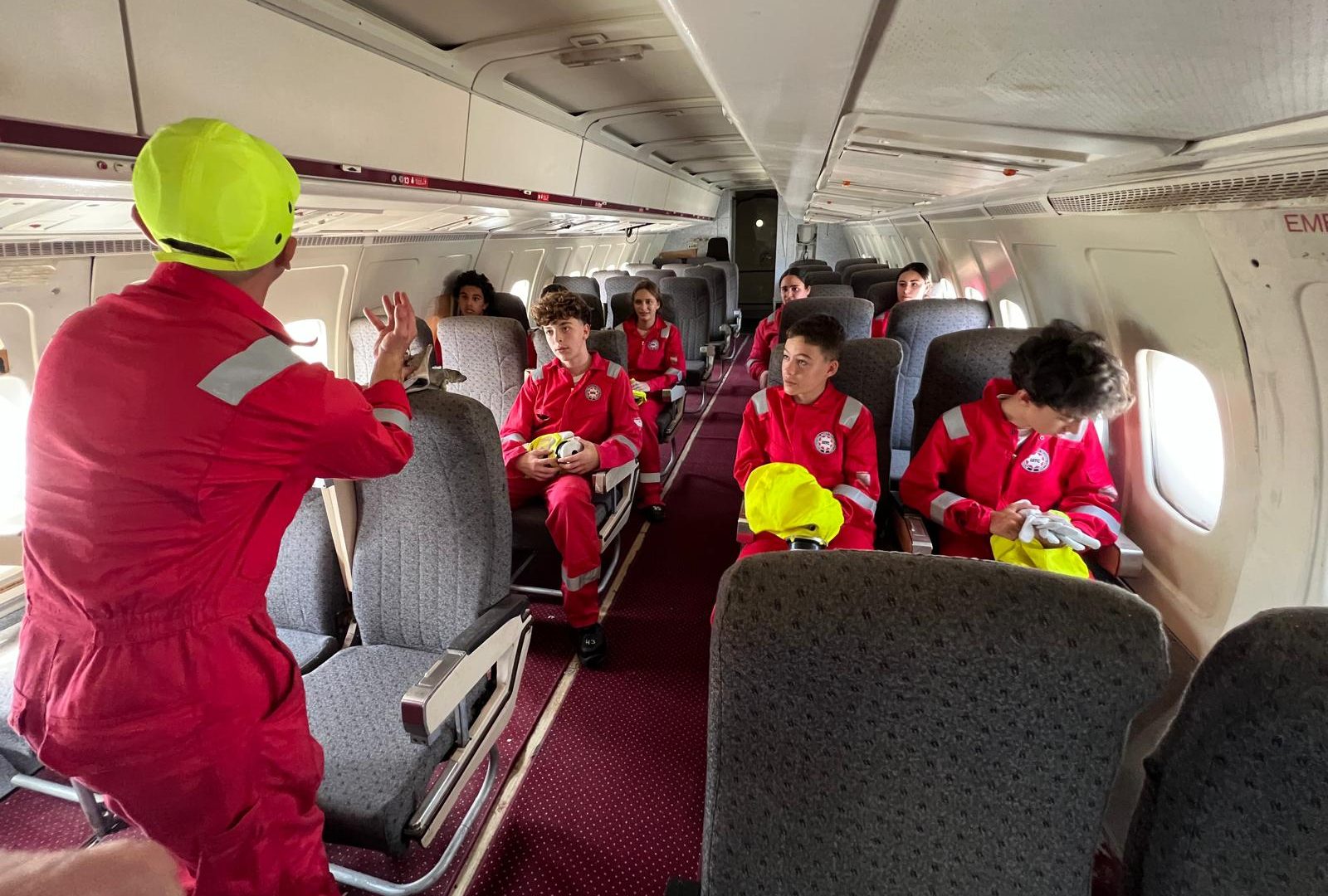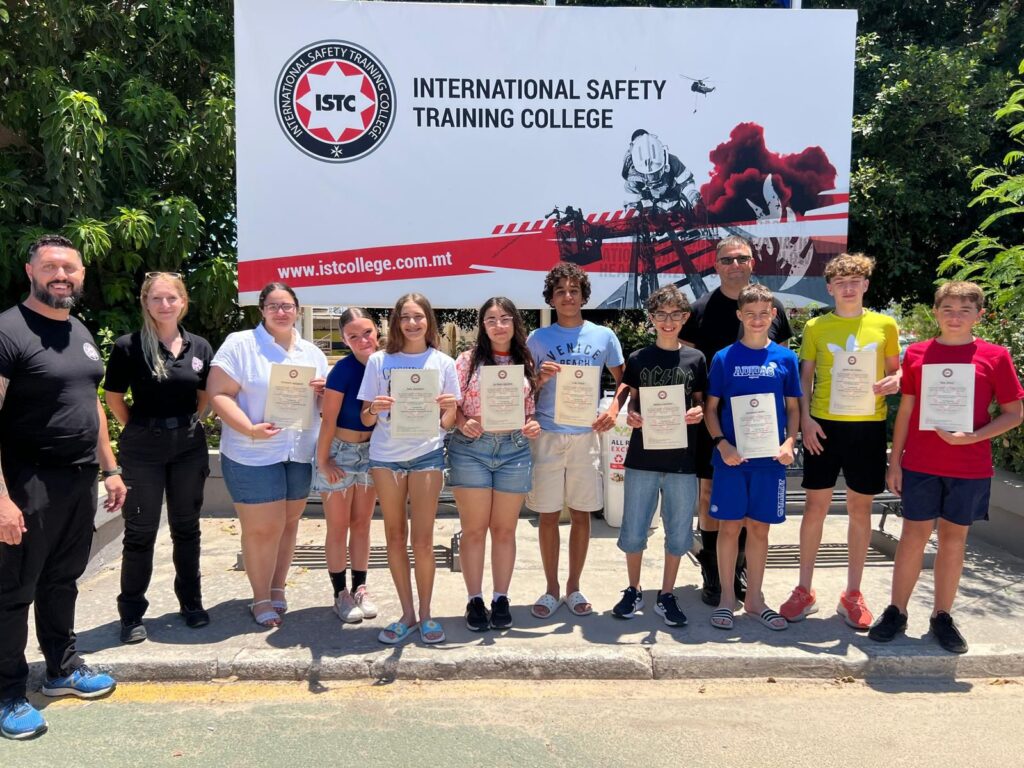
The safety training at ISTC (part of the Alberta Group) taught me firefighting, aircraft evacuation, and sea survival techniques through hands-on activities.
We started at 8:30am by filling out some forms regarding safety and protocols, before moving to our first session. After a presentation about firefighting, presented to us by an actual firefighter, we got to wear real firefighting gear and practice using different extinguishers to put out fires. The PPE made me appreciate how difficult firefighting actually is. Feeling the heat and weight of the gear gave me a whole new respect for firefighters.
The aircraft evacuation drill was surprisingly intense. Wearing smoke hoods, we entered an aircraft cabin, which was later filled with thick synthetic smoke where we could barely see our hands in front of us. Crawling on our knees while holding hands with the person in front of us and the person behind us showed me how challenging a real emergency evacuation would be. It was way harder than it looked, and I realised how important it is to stay focused and not panic, and working as a team.
After a quick water break, we changed into survival suits for the survival techniques at sea. We learnt how to properly jump into water—keeping your body straight while protecting your nose and mouth. In the pool, we used the HELP position to conserve body heat and also learned that swimming backwards is actually the best technique when wearing a life jacket. It felt strange at first, but it made swimming a lot easier.
The partner rescue exercises were both fun and challenging. Taking turns playing both rescuer and victim, we practiced towing techniques. Forming group huddles to preserve body heat showed how teamwork can be crucial in survival situations.
One of the most memorable parts was when we all climbed onto a dinghy that looked like a floating tent in the pool. Climbing onto the dinghy was surprisingly tough, especially with the survival suit on. We camped there for two minutes to rest. Then we all jumped back into the water and formed another huddle. It was a fun little break in the middle of all the action.
The helicopter winch rescue was definitely the most exciting part. Being lifted from the water in a rescue harness gave me a real appreciation for how these operations work in actual emergencies. It was something I never thought I’d get to try.
At the end of the training, we had delicious food in the canteen, which was a great way to refuel after all the training. After we ate, we received certificates and had time to reflect on everything we’d learned. What impressed me most was how the hands-on approach made all the safety procedures feel real and memorable. I now feel much more confident about how to react in emergency situations. This training wasn’t just informative – it was genuinely enjoyable and something I’ll never forget.
Matteo Emanuele Camilleri
